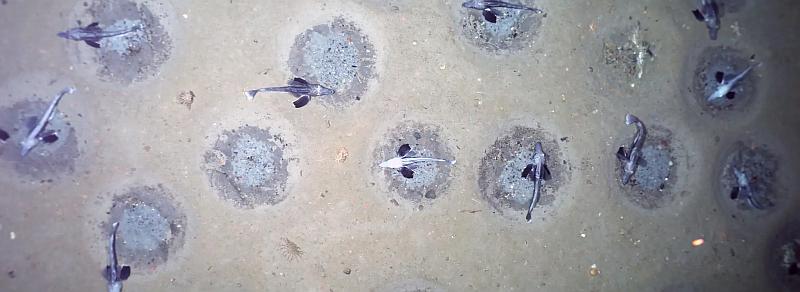 In February 2021, researchers on the German research vessel Polarstern discovered, quite by accident, the largest fish breeding area ever found near the Filchner Ice Shelf in the south of the Antarctic Weddell Sea. A towed camera system filmed thousands of nests of icefish of the species Neopagetopsis ionah on the seabed, more than a thousand feet below the surface.
In February 2021, researchers on the German research vessel Polarstern discovered, quite by accident, the largest fish breeding area ever found near the Filchner Ice Shelf in the south of the Antarctic Weddell Sea. A towed camera system filmed thousands of nests of icefish of the species Neopagetopsis ionah on the seabed, more than a thousand feet below the surface.
The discovery is described in a paper in the most recent edition of Current Biology.
Scitechdaily reports that the mapping of the area suggests a total extent of 240 square kilometers, which is roughly the size of the island of Malta. Extrapolated to this area size, the total number of fish nests was estimated to be about 60 million. “The idea that such a huge breeding area of icefish in the Weddell Sea was previously undiscovered is totally fascinating,” says Autun Purser, deep-sea biologist at the Alfred Wegener Institute, Helmholtz Centre for Polar and Marine Research (AWI) and lead author of the current publication.
Blue and partly transparent, icefish have proved adept at surviving in the frigid, deep-sea waters of Antarctica. Their blood is copper-based — rather than iron-based like human blood — which allows their bodies to transport oxygen in such an extreme environment.
Unique discovery: 60 million icefish discovered in Antarctica | Icefish Colony
